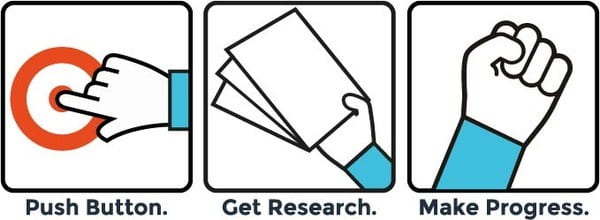Open Access Week: Finding and using Open Access resources
By Kirsty, on 23 October 2020
With all of the focus this week having been on the why and the how of making research Open Access, in our last post this Open Access Week we want to turn the tables and help you with finding open access content and deciding whether you can trust it. In other words:
What use is it for others to make things Open if you can’t get the benefits of using them?! What use is being able to find them if you don’t know whether they’re trustworthy?
The following tools and techniques will help you find verified Open Access content and check that it’s of good quality. Spoiler alert: scroll down to find the one simple tool that surpasses all others!
Finding Reliable Open Access Content
There are a number of helpful registries that collate and verify Open Access content:
- Directory of Open Access Books (DOAB) lists over 30,000 Academic peer-reviewed books from 404 publishers. All publishers in DOAB are screened for their peer review procedures and licensing policies.
- The Directory of Open Access Journals (DOAJ) is a registry of over 12,000 journals that fulfil a stringent list of conditions for open access, transparency, preservation and reuse. Being listed in the Directory is a positive sign that the journal is of good quality, as they have made recognised commitments to longevity and maintenance of their content.
- COnnecting REpositories (CORE) lists content from university, research institute and public institution repositories from all over the world. To find out more about how UCL supports Open Access and what goes into our repository, have a look at Tuesday’s blog post! Repositories can also get an additional level of accreditation with CoreTrustSeal.
- The Registry of Research Data Repositories, better known as Re3data, is a great place to go to find out what data repositories are available. These repositories cover a wide range of subject areas and specialisms, and you should easily be able to identify a suitable repository to find what you need.
Open Access content is also listed on a number sites that pull from these sources. For example, books from our own UCL Press can be found on UCL Explore but also on databases like JStor.
But there is a simpler way!
Back in March we wrote a post about a tool called Open Access Button. It’s worth another mention in Open Access Week. It’s a browser extension that can look for openly available versions of exactly which articles and books you want, in all of the sources above! It will even send requests for an Open version of something if one isn’t available.
Assessing Open Access Publications
What if you haven’t been using the sources we’ve mentioned? We all know that there is a lot of bad information out there on the internet. Fake news has taught us to always check and verify information before using it, and academic information is no different. A common concern for researchers preparing to share their data or publications is whether the journals and platforms are trustworthy. We’ve discussed that in posts earlier in the week. It is the same when using content – the first question you need to ask is: can I trust this?
There are checklists available which can help you determine if a source of information is reliable. These work equally well on any sort of information, Open Access or otherwise. UCL Library Services recommends a couple of checklists and have a lot of guidance on finding and assessing information on LibGuides. One technique that is popular is called the CRAAP test:
- C: Currency: When was the source published? Is it appropriate in the context to use older material, or is it important that it is current?
- R: Relevance: Is the information relevant to your studies or research? And is it at the right academic level?
- A: Authority: Who is the author and/or publisher? Are they a trustworthy source?
- A: Accuracy: Where does the information come from? Is there evidence? Can it be verified?
- P: Purpose: Why was the information produced? Is the purpose clear and are there any biases?
CRAAP test – Information on the CRAAP test from the Meriam Library at California State University, Chico, who developed the tool.
Assessing Open Access Data
The best way to analyse Open Access data, aside from the above technique which also applies, is to look at both the reference in any papers that cite it, and the associated documents provided. Look for a ReadMe file or examine the Data Management Plan if one is provided: you’re looking for a good description of how the data was generated and processed. These files should have all of the information you need to know if you wanted to reproduce the data yourself.
And finally…
With that, we’ve come full circle – from making your research Open, to finding and using others’ Open research. From UCL’s new Office for Open Science and Scholarship, officially launched in Open Access Week 2020, happy Open Access Weekend!
 Close
Close




